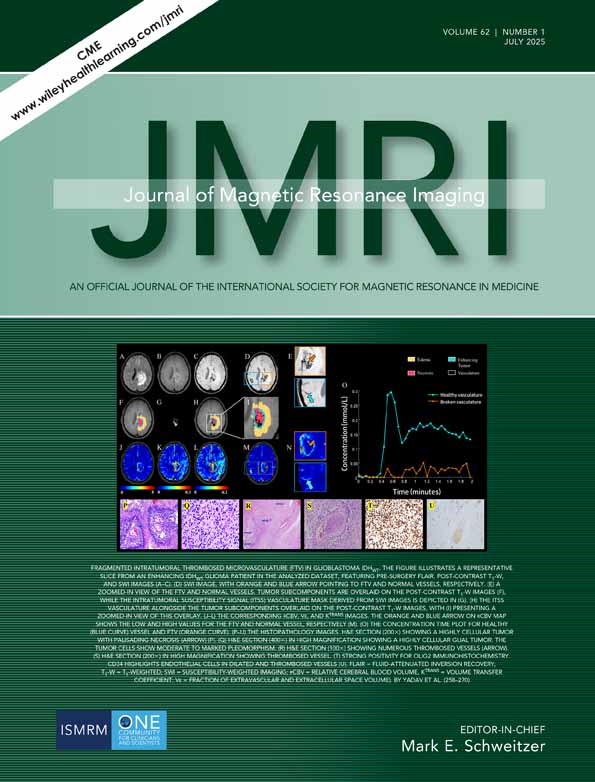Prenatal MR Diagnosis of Total Anomalous Pulmonary Venous Connection and Related Brain Growth Changes
Jing-Ya Ren and Chang-An Chen contributed equally to this work.
Abstract
Background
Prenatal diagnosis of total anomalous pulmonary venous connection (TAPVC) is challenging, and little is known about how it affects brain development.
Purpose
To evaluate the utility of fetal MRI to diagnose TAPVC and related brain growth changes.
Study Type
Retrospective case–control study.
Population
Twenty-one fetuses (23.0 to 30.8 weeks, mean 26.4 weeks) with pre-natal MRI diagnosis of TAPVC. Post-natal images and surgery were available in 18 fetuses. Brain volumes in TAPVC fetuses were compared with age and sex matched 100 cases of normal controls and 38 fetuses with tetralogy of Fallot (TOF).
Sequence
Single shot turbo spin echo sequence for evaluating fetal brain, and steady-state free precession (SSFP) sequence for evaluating fetal cardiovascular structures at 1.5 T.
Assessment
TAPVC type was determined by visualizing the drainage of the common pulmonary vein and dilated coronary sinus: supracardiac, intracardiac and infracardiac. The fetal pulmonary edema was evaluated, and fetal brain volumes were measured using automatic segmentation.
Statistical Tests
One-way analysis of variance and post hoc least square difference tests to evaluate differences in variables between TAPVC, TOF and control groups. A P value <0.05 was considered significant.
Results
Of the 21 cases of TAPVC, 10 (47.6%) were identified as supracardiac, 8 (38.1%) as intracardiac, and 3 (14.3%) as infracardiac. Eighteen cases were confirmed by postnatal imaging and surgery; the remaining three cases had no confirmation. Six cases were associated with other cardiovascular abnormalities. Key MRI features of fetal TAPVC included a dilated coronary sinus and vertical vein. Fetal pulmonary edema was seen in six cases. Compared to controls, TAPVC fetuses had lower cerebellum and brainstem volumes and higher e-CSF, while had larger subcortical brain tissue, cerebellum, brainstem, e-CSF, and intracranial cavity volumes than those of TOF cases.
Data Conclusion
Fetal MRI may be a useful modality for evaluating fetal TAPVC and altered brain development.
Evidence Level
3
Technical Efficacy
Stage 3




